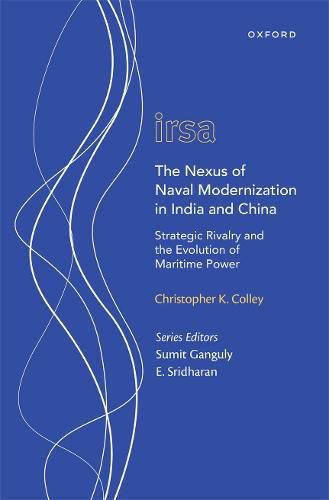Readings Newsletter
Become a Readings Member to make your shopping experience even easier.
Sign in or sign up for free!
You’re not far away from qualifying for FREE standard shipping within Australia
You’ve qualified for FREE standard shipping within Australia
The cart is loading…






Naval modernization is an extremely expensive, time-consuming, and a relatively rare phenomenon. Scholars have proposed various arguments to explain this process ranging from bureaucratic politics, to nationalism, and to the security dilemma. The Nexus of Naval Modernization in India and China demonstrates that from 1990 until 2020, the primary driver of naval modernization resulted from a strategic rivalry. Key to strategic rivalries is perceived threat perceptions that cause decision makers to prepare for worst-case scenarios when trying to decipher their enemy’s behaviour. When a state believes it is threatened by a rival’s naval power it is likely to pursue its own form of naval modernization for self-protection. Importantly, rivalries do not exist in a vacuum and are frequently linked. This project will reveal how the interconnected nature of rivalries can also cause naval modernization. Through a close examination of scholarly works, government documents, and in-depth focused interviews with experts based in India, China, Australia, and the U.S. Colley argues that while strategic rivalry is not the only driver of naval modernization, it is the most compelling explanation. Other arguments are frequently embedded within the strategic rivalry model and thus are best seen as only partial drivers. This study contributes to the rivalry research program as well as the policy and security studies literatures.
$9.00 standard shipping within Australia
FREE standard shipping within Australia for orders over $100.00
Express & International shipping calculated at checkout
Naval modernization is an extremely expensive, time-consuming, and a relatively rare phenomenon. Scholars have proposed various arguments to explain this process ranging from bureaucratic politics, to nationalism, and to the security dilemma. The Nexus of Naval Modernization in India and China demonstrates that from 1990 until 2020, the primary driver of naval modernization resulted from a strategic rivalry. Key to strategic rivalries is perceived threat perceptions that cause decision makers to prepare for worst-case scenarios when trying to decipher their enemy’s behaviour. When a state believes it is threatened by a rival’s naval power it is likely to pursue its own form of naval modernization for self-protection. Importantly, rivalries do not exist in a vacuum and are frequently linked. This project will reveal how the interconnected nature of rivalries can also cause naval modernization. Through a close examination of scholarly works, government documents, and in-depth focused interviews with experts based in India, China, Australia, and the U.S. Colley argues that while strategic rivalry is not the only driver of naval modernization, it is the most compelling explanation. Other arguments are frequently embedded within the strategic rivalry model and thus are best seen as only partial drivers. This study contributes to the rivalry research program as well as the policy and security studies literatures.